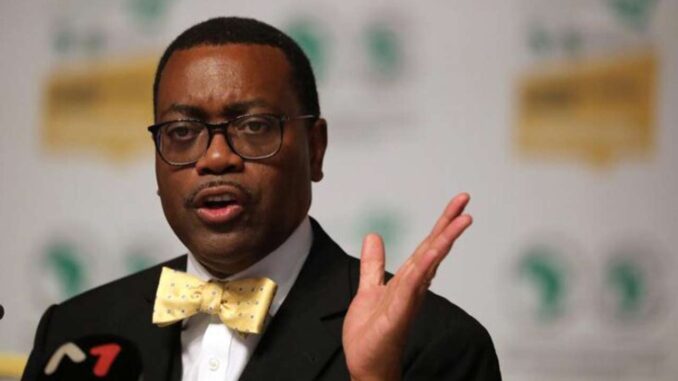
The economy must be structured in a way that it must help the society and the human resource therein to develop themselves, and, in turn, they should help in developing, further, the economy. It is a mutual interest that leads to sustainable development…
Houphouët-Boigny’s assertion was one of the driving forces that made Côte d’Ivoire the best among its peers at the time African Development Bank made great impact in Africa as the Institution that provided the stimulus for the development of Africa and, remains headquartered in Abidjan, after a brief “refugee” status in Tunisia. Houphouët-Boigny, the then President of Côte d’Ivoire, witnessed all the Presidents of AfDB, till 1994 (1964 – 70: Mamoun Beheiry – Soudan 1970 – 76, Abdelwahab Labidi – Tunisia 1976 – 79, Kwame Donkor Fordwor – Ghana 1979 – 80, (Interim Caretaker) Godwin Gondwed – Malawi 1980 – 85, Willa Mung’Omba – Zambia 1985 – 95, Babacar N’Diaye – Senegal 1995 – 2005). He helped them in action and benefited enormously from them as well as them receiving his great support in actualizing the AfDB mission.
African Development Bank (AfDB) unlike Asian Development Bank (ADB) had gone through a lot of teething problem and it is not too far from being that the combined shareholdings of USA and Japan – great allies in even the inner circle of G8 matter in decision making in both banks that draw their strength on what the World Bank and IMF make of them. Their interests got the two Banks to open up for diversity, and more interest and shareholding entities beyond Africa, known as non-regional countries’ shareholders who count for about 42 countries against Africa’s 54 countries took part in the governance. And it was necessitated to mobilize financial resources from all over the world to support sustainable economic and social development in Africa as espoused by the founding fathers – Nkrumah, Nasser, Touré, Tolbert, Selassie etc.
At the time Babacar N’Diaye, the fifth President of the AfDB, initiated it, followed by Tejan Kabajj of Morocco and Donald Kaberuka of Rwanda, the governance of the Bank was almost 50 – 50 geared in both credit sourcing and decision making to an extent that the fear was that Africa was loosing grips; but it was, indeed, helpful as control remained very thorough and strict.
Today, it is about 59 – 41. Current controversy of staffing interest also trailed Bababar N’Diaye but it was nipped in the bud as the weight of the Francophone shareholders including France, Canada, and what former president of Liberia Sirleaf Johnson described as bringing together the Brazzaville and Monrovia groups, played out well.
Akinwumi Adesina like Donald Kaberuka came in also at the time Alassane Ouattara became the President of Côte d’Ivoire, restoring order in Côte d’Ivoire and returning back AfDB from Tunisia, hence the man who also holds the ace in stabilizing AfDB the way Houphouët-Boigny did notwithstanding any group’s interest – regional groups of Cassablanca, Monrovia or Brazzaville, non-Regional groups led by USA and Japan, Staff group led by any Director that tables motion of no-confidence on the President to the Ethics Committee which must go through solid institutional offices like that of Administrative Tribunal, Sanctions Appeal Board, Integrity and Anti-Corruption Office notwithstanding that of Auditor General’s if financial.
The Board of Governors are, for sure, greatly decisive in decision making and that is where people like Alassane Ouattara, the President of Cote d’Ivoire who worked so hard to return AfDB to Abidjan matters. While AfDB was in Tunisia Tejan Kabajj’s position for second tenure was also threatened but it was also resolved as the Casablanca group pleaded that its candidate be allowed to complete a second tenure.
Nigeria had tried three times to lead the Bank without success till Akinwumi Adesina broke the jinx and had proved a unifying factor. And as Donald Kaberuka once said, African Development Bank must remain a model of how Africa and the developed world could work together for mutual benefit with mutual respect; and in greater perspective, to meet the 17 Sustainable Development Goals set by the United Nations; and Africa is still behind; but Adesina had set its own vision as “Betting on Africa feeding the World”, and “Light up Africa” as well as “Integrating Africa”. These activities could be seen in over 7billion Units of Account (UA)$10billion projects approved in 2018. Compared to ADB that is about 14billion UA, there is need for more support from the world.
“Light up Africa” was one of the exposition I, par chance, found myself attending at the headquarter of AfDB in Abidjan and it was greatly attended by investors from all over the world. And, I personally saw its benefit as I saw myself in Marrackech in Morocco with great wind energy farms and the great infrastructural development it attracted to Morocco. In effect, it shows how good governance of AfDB could go a long way in helping Africa achieve its developmental goals. I was also opportune to be ushered in to the office of the Acting Director of the Communication’s Department of the Bank manned by Nafissatou Diouf, a great performer. Just a pamphlet she handed to me, and as I activated it on my mobile phone by mere flashing the code on it, a document of over 500 pages was at my disposal. And it said a lot about how the Bank has performed during the tenure of Akinwumi Adesina and it is important to let AfDB continue in good governance as its August meeting beckons for continuity and renewal.
Ariole is Professor of French and Francophone Studies University of Lagos.
END

Be the first to comment